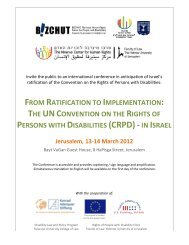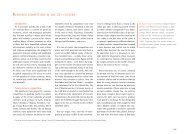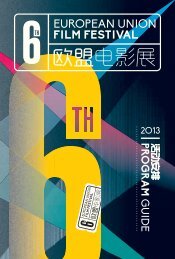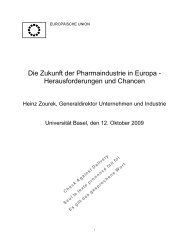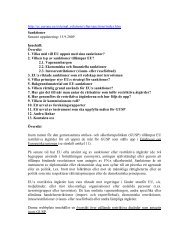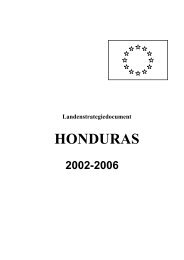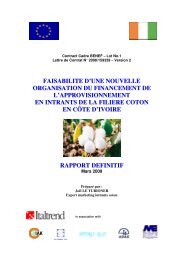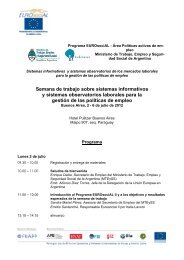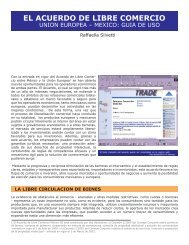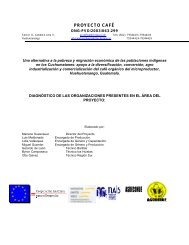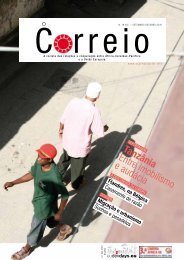Bhutan Country Strategy Paper 2007-2013 - the European External ...
Bhutan Country Strategy Paper 2007-2013 - the European External ...
Bhutan Country Strategy Paper 2007-2013 - the European External ...
Create successful ePaper yourself
Turn your PDF publications into a flip-book with our unique Google optimized e-Paper software.
focus of <strong>the</strong> interventions. In addition, given that Good Governance is a cross sectoral<br />
issue, this assistance could come in <strong>the</strong> form of budgetary support.<br />
• Trade Facilitation: given <strong>the</strong> need for <strong>Bhutan</strong> to participate more effectively in <strong>the</strong> global<br />
economy, EC support for trade facilitation will be addressed in <strong>the</strong> second MIP.<br />
EC assistance in <strong>the</strong> areas of intervention will be complemented by a limited range of actions<br />
and support received through various <strong>the</strong>matic programmes and regional budget lines.<br />
1. <strong>Bhutan</strong>’s Political, Economic, Social and Environmental Situation<br />
1.1 The Political Situation<br />
The Wangchuck dynasty was established in 1907 bringing an end to <strong>the</strong> traditional <strong>the</strong>ocracy and<br />
marking a transition to civil administration. Today, <strong>Bhutan</strong> has a hereditary monarchy and is ruled<br />
by <strong>the</strong> fifth hereditary King, His Majesty <strong>the</strong> King Jigme Khesar Namgyel Wangchuck. The Fourth<br />
King, His Majesty Jigme Singye Wangchuck handed over responsibilities of <strong>the</strong> monarch to <strong>the</strong><br />
Crown Prince on 15 December 2006.<br />
Under <strong>the</strong> leadership of <strong>the</strong> successive Wangchuck monarchs, major reforms and innovations<br />
were undertaken and since 1990, His Majesty <strong>the</strong> Fourth King has increasingly delegated<br />
governing functions to <strong>the</strong> National Assembly and <strong>the</strong> Council of Ministers. The Council of<br />
Ministers, elected by <strong>the</strong> National Assembly, has been delegated full executive authority, while <strong>the</strong><br />
post of Prime Minister (heading <strong>the</strong> Cabinet) is rotated annually among <strong>the</strong> five ministers who<br />
receive <strong>the</strong> most votes.<br />
Towards democratisation<br />
In 2005 <strong>the</strong> Government conducted a review of <strong>the</strong> existing system of governance and<br />
recommended a number of changes to policies, structures and system of governance. The main<br />
challenges foreseen are <strong>the</strong> enormous expenditure to establish and run new institutions and <strong>the</strong><br />
need for capacity building and human resources development to provide effective governance<br />
under <strong>the</strong> new political system. Fur<strong>the</strong>rmore, <strong>the</strong> Government is currently developing its policy<br />
and regulatory framework for financing local government, in order to develop basic infrastructure<br />
and service delivery at <strong>the</strong> local level. In <strong>the</strong> 10 th Plan Period (July 2008-June <strong>2013</strong>, coinciding<br />
largely with <strong>the</strong> CSP period) <strong>Bhutan</strong> will witness a process of profound political transformation. A<br />
draft Constitution was widely distributed in March 2005 and is expected to be adopted by <strong>the</strong><br />
National Assembly in 2008 after <strong>the</strong> first ever parliamentary elections to set up parliamentary<br />
democracy in <strong>Bhutan</strong>.<br />
Administration<br />
<strong>Bhutan</strong> is governed through three levels of administration -- <strong>the</strong> central government agencies,<br />
district administrations, and block administrations. The country is currently divided into 20<br />
districts (Dzongkhag), which are fur<strong>the</strong>r divided into blocks (Gewogs). The Blocks are composed<br />
of several villages, each containing roughly 20 extended households. Each district has established<br />
District Development Committees (DYTs) in 1981 and in fur<strong>the</strong>r developing <strong>the</strong> process of<br />
decentralisation, Block Development Committees (GYTs) were established in 1991.<br />
The DYTs are made up of <strong>the</strong> elected representatives of <strong>the</strong> people in <strong>the</strong> National Assembly<br />
(Chimi), <strong>the</strong> block leaders (Gups) and <strong>the</strong> village leaders (Mangaaps). The GYT, which is a fur<strong>the</strong>r<br />
breakdown of <strong>the</strong> DYT, consists of <strong>the</strong> block leader, village leaders, and <strong>the</strong> representatives<br />
2




